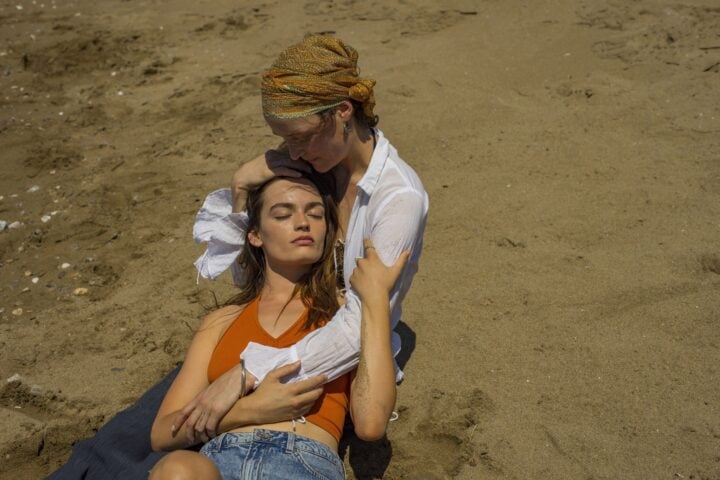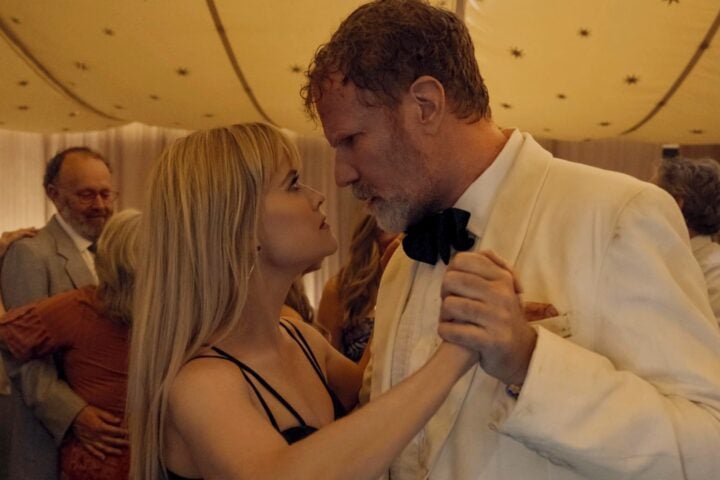From the early, lo-fi days of her career as something of a muse for the mumblecore movement, Greta Gerwig has been interested in messy tales of nascent adulthood. And from her partnerships with now-husband Noah Baumbach, most notably 2012’s Frances Ha, to her own solo directorial work (2017’s Lady Bird and 2019’s Little Women), her films have continued to bear the mark of a storyteller who understands the ways that modern adults, but especially women, are burdened by the weight and expectations of responsibility.
Gerwig’s Barbie is partially inspired by psychologist and author Mary Pipher’s Reviving Ophelia, a 1994 bestseller about how adolescent girls lose their identities while navigating a looks-obsessed, media-saturated culture. That should be enough to quell expectations of the film playing out as a show of allegiance to one of the most recognizable brands in the world. And if it doesn’t, the subversive streak of Gerwig and Baumbach’s script certainly will.
At once a journey of self-actualization and a testament to female solidarity, Gerwig’s film is here to explain how the patriarchy is an all-inclusive, regressive force. Which isn’t to say that this film, which very smartly sees girlboss feminism as a way for the patriarchy to hide itself better, is a bummer. It certainly helps that the filmmakers are getting their message across with live-action Barbie and Ken dolls. Gerwig and Baumbach make an explicit point of targeting the unrealistic expectations that the Barbie doll has set for generations of kids while also upholding its promise as an object of a young child’s most prized possession: an unabashed imagination.
Riffing on the iconic “Dawn of Man” sequence from Stanley Kubrick’s 2001: A Space Odyssey, Barbie cheekily acknowledges the Mattel brand’s massive cultural footprint by beginning as something of a historical fantasy that retells the story of human evolution as a byproduct of the invention of dolls. It then introduces us to Stereotypical Barbie (Margot Robbie), who’s settled into her dream life in Barbie Land: a pristine matriarchal society that exists somewhere in our collective imagination off the coast of—where else?—Venice Beach, California.
It’s there that Barbie’s boyfriend, Ken (Ryan Gosling), trades innocuous, homoerotic banter with another Ken (Simu Liu) while at the same time doting on Barbie, whose mostly content to spend the majority of her days and nights hanging out with her unequivocally supportive best friends, among them President Barbie (Issa Rae), Physicist Barbie (Emma Mackey), and Doctor Barbie (Hari Nef). And though Gosling’s Ken wishes that he received a bit more affection from his girlfriend, for him, too, life in plastic seems pretty fantastic.
Then, one day, the idyllic, semi-autonomous world of Barbie Land—smoothly designed by Sarah Greenwood to mimic the plasticity of the real-life toys, and in a mind-boggling array of bubblegum pinks and cotton-candy blues—experiences a disruption: During a dance break (shades of Vincente Minnelli), Barbie asks her friends if anyone ever thinks about dying.
The rupture of Barbie Land’s utopia takes Barbie on an Oz-like journey of reckoning that’s kicked earnestly into motion by a consultation with Weird Barbie (Kate McKinnon), a stretchy, clownish doll who doesn’t move right, because, as Helen Mirren’s voiceover tells us, she was played with “too much.” Turns out, Barbie’s “irrepressible thoughts of death” are due to a break in the space-time continuum, and she has to venture into the real world to fix it before she’s in danger of such ghastly things like cellulite. But Gosling’s Ken crashes her trip, and the two are gobsmacked by the realization that sexism and inequality is very much alive in our world.
Then, another disruption. While Barbie is excited to gaze upon a world of complex relationships and simmering contradictions, Ken is mostly attracted to how it’s very clearly ruled by patriarchal prerogative. Soon he takes news of this universe that’s built by and for people that look exactly like him back to the other Kens in Barbie Land, which faces the problem of being completely overrun with fascism. Barbie, meanwhile, is hunted and ogled by men across Los Angeles, as Mattel’s CEO (Will Ferrell) and his all-male executive board try to, quite literally, put her back in a box before the world discovers that she’s escaped.
After years of making a meal out of small budgets, it’s mesmerizing to see what Gerwig does with something much more substantial. Barbie deliriously draws inspiration from a wide range of cinematic sources, with references to The Umbrellas of Cherbourg, Groundhog Day, The Matrix, Toy Story, and, most hilariously, The Godfather. The breadth of these references constitutes a kind of metalanguage for Gerwig and Baumbach, through which they ask us to both respect Barbie’s place in popular culture as well consider the complex relationship society has had with the doll—that is, all of the implications of its massive cultural impact.
In a wonderfully naked moment in the film, one that articulates a certain kind of anxiety that we all have about how we make our mark in a world that expects us to be perfect, Robbie’s Barbie wonders what she’s supposed to do if she isn’t special. Gerwig and Baumbach clearly understand that at some point children throw away their Barbies, but that, by then, these dolls have already done their damage by reinforcing, among other things, gender roles.
Overeager though it may be to proclaim its progressive bona fides, the film sharply understands that the patriarchy represses not just women, but everyone and everything, right down to the environment, and that dismantling it is a liberation for all. And it argues this point through biting satire and the journey that the Barbie and Ken dolls take toward self-awareness. The latter is made especially indelible by Robbie and Gosling, both of whom seamlessly shuffle between the Chaplin-esque comedy of their plastic movements to the sincerity of the film’s pathos as Barbie and Ken travel further down the road of self-discovery.
Barbie is a parody with a morally and politically righteous core, both in dialogue with, and a necessary departure from, the world that Mattel’s Barbie stands behind. In the world of Gerwig’s film, whose detail-rich, forceful vision is the antithesis of the Barbie brand’s vague messaging and sense of trendsetting, not everything is equal. But the film makes you believe in the possibility of that equality—that it can be more than just a beautiful promise. And it does so by refining the doll’s intended message by suggesting that kids aren’t really free to imagine the possibilities of their future if they’re also being forced to conform to expectations.
Since 2001, we've brought you uncompromising, candid takes on the world of film, music, television, video games, theater, and more. Independently owned and operated publications like Slant have been hit hard in recent years, but we’re committed to keeping our content free and accessible—meaning no paywalls or fees.
If you like what we do, please consider subscribing to our Patreon or making a donation.







Despite the (otherwise great) filmmakers’ efforts, this movie is and will always be, unavoidably, a doll ad. Just as the Lego movie is unavoidably a toy ad. “It doesn’t really matter what the filmmakers wound up doing with the material” should perhaps have been the text of the movie in lieu of all its pop culture self-reflexivity because, in the end, this picture will bolster sales and erect superstores and erode film and film-going, continuing the latter down the theme park/product movie path, as much as any Lego or Marvel movie has. It’s a real waste of time for filmmakers who could just be doing something else.